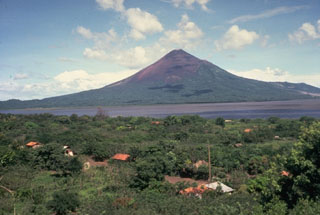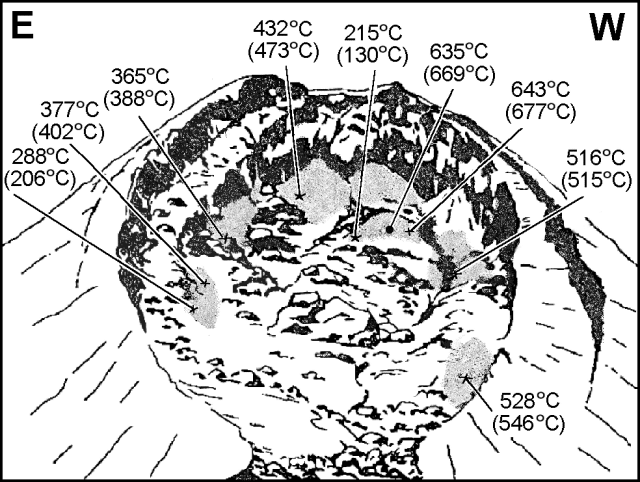Report on Momotombo (Nicaragua) — November 1996
Bulletin of the Global Volcanism Network, vol. 21, no. 11 (November 1996)
Managing Editor: Richard Wunderman.
Momotombo (Nicaragua) Seasonally varying fumarole temperatures
Please cite this report as:
Global Volcanism Program, 1996. Report on Momotombo (Nicaragua) (Wunderman, R., ed.). Bulletin of the Global Volcanism Network, 21:11. Smithsonian Institution. https://doi.org/10.5479/si.GVP.BGVN199611-344090
Momotombo
Nicaragua
12.423°N, 86.539°W; summit elev. 1270 m
All times are local (unless otherwise noted)
During summit area visits on 30 October and 29 November, measured fumarole temperatures ranged from 215 to 643°C and from 130 to 677°C, respectively (figure 5). Fumarole temperatures on 29 November were generally higher than those on 30 October but lower than those in April 1996 (BGVN 21:04). These fumarole temperature variations were mainly believed to be due to seasonal changes. An intense rainy season, especially in October, caused strong erosion of the crater, and might account for the lower fumarole temperatures measured on 30 October.
Geological Summary. Momotombo is a young stratovolcano that rises prominently above the NW shore of Lake Managua, forming one of Nicaragua's most familiar landmarks. Momotombo began growing about 4500 years ago at the SE end of the Marrabios Range and consists of a somma from an older edifice that is surmounted by a symmetrical younger cone with a 150 x 250 m wide summit crater. Young lava flows extend down the NW flank into the 4-km-wide Monte Galán caldera. The youthful cone of Momotombito forms an island offshore in Lake Managua. Momotombo has a long record of Strombolian eruptions, punctuated by occasional stronger explosive activity. The latest eruption, in 1905, produced a lava flow that traveled from the summit to the lower NE base. A small black plume was seen above the crater after a 10 April 1996 earthquake, but later observations noted no significant changes in the crater. A major geothermal field is located on the south flank.
Information Contacts: Alain Creusot, Instituto Nicaraguense de Energía, Managua, Nicaragua.


